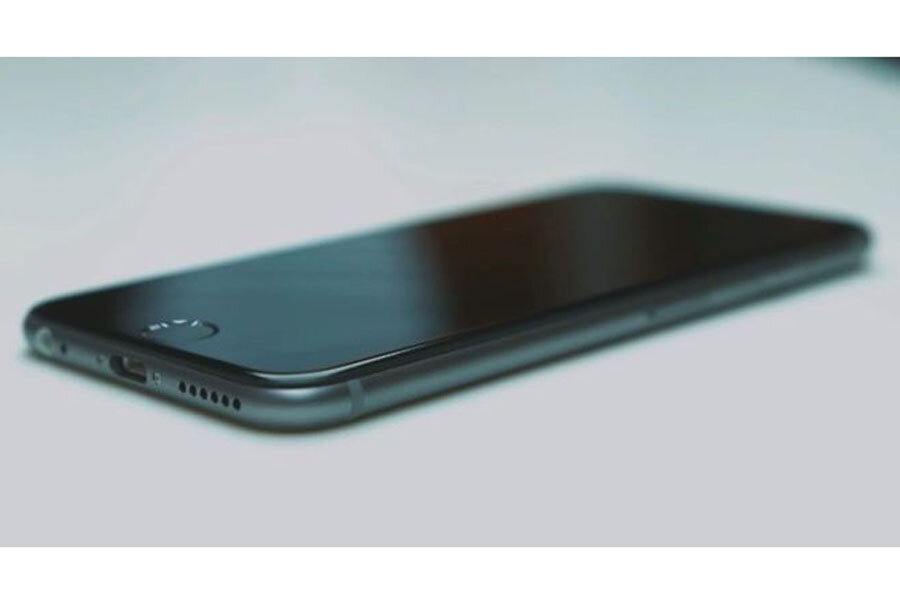iPhone 6 'phablet'? Four questions answered.
Loading...
Few topics excite tech enthusiasts quite like the unveiling of a new Apple product.
Among the devices expected to be announced at the company's media event next week is its next-generation iPhone 6, which will supposedly come in two sizes: a 4.7-inch and a larger 5.5-inch display, otherwise known as a "phablet" size.
Let's break down what we know about these phones to gauge what an Apple phablet will mean for consumers and for the smart phone market.
What will these new iPhones be like for users?
The larger phone will likely cost more. Recent reports say both phones will feature rounder edges than previous iPhones. While previous reports said the phones will have a sapphire crystal display as opposed to the traditional Gorilla Glass made by Corning, a recent report says neither phone will feature a sapphire lens as a result of drop test issues. As for using a larger phone, the phones will reportedly have a one-handed mode, allowing people to use the phone with only one hand.
Apple is also reportedly working with Visa, MasterCard, and American Express on a mobile payment system that could, in theory, replace credit cards. Such a payment system will let customers pay for items from certain businesses without exchanging cash or handing over a credit card.
The phones will run Apple's latest iOS 8 operating system, which notably comes with new apps designed to let users monitor their health data and control their connected home devices as well as a feature that lets users transition seamlessly from their iPhone to other Apple devices such as a tablet or desktop.
What kind of demand is there for larger smart phones?
In short, a big one. And market research firm IDC predicts that appetite is only growing. Last year, in China, the world's largest smart phone market, IDC says smart phones with screens of 5 inches or larger made up 20 percent of all smart phone shipments. That number is expected to increase to 50 percent in 2017.
Moreover, IDC estimates that phones with screens measuring 5.5- to 5.7-inches – "phablets" – will surpass the number of laptop shipments this year and surpass tablet shipments in 2015.
"People want these things," says Ramon Llamas, research manager for IDC's mobile phones team. "They want to be able to view more content. They want to see content easily, share experiences more easily instead of crowding around a tiny three-and-a-half-inch screen While some critics might complain about holding a large device to their heads." Mr. Llamas says that's not a concern for most users. "Where the phablet comes in is it's all about data. It's easier to view and manipulate and see. And that's why the big screen is really exciting for a lot of people."
Will a phablet replace the iPad?
Probably not.
Apple's most recent earnings report revealed a drop in iPad tablet sales, leading critics to suggest that a phablet could have the consequence of Apple competing with its own product, particularly the 7.9-inch iPad Mini. But there will likely be room for both iPads and larger iPhones.
"Given Apple's continuing investments to develop the iPad line, I don't think that product line is going to be going away any time soon," Llamas says.
And for consumers looking to upgrade to an even larger tablet, Apple is also rumored to have a 12.9-inch iPad in the works for a 2015 release. Still, customers keeping their tablets for longer than anticipated as well as the increasing popularity of phablets has contributed to the slowing of the tablet market.
How will Apple's phablet fare against existing competition?
Though Apple co-founder Steve Jobs trumpeted a mantra of original innovation as opposed to following market trends, Apple is relatively late in its first phablet offering. Long-time competitor Samsung is the established top player in phablet shipments, in addition to claiming the spot as the No. 1 smart phone maker in the world.
But Apple's brand name can woo loyal customers, despite the wide offering of large smart phones already out there, according to Tuong Nguyen, an analyst at the technology research firm Gartner.
"They're not the only vendor offering it so they don't get to corner the market," he says. "But they have that established brand that can win consumers hearts and minds."
And because phablets are still relatively uncommon in North America, he says Apple could set the tone for phablets in a new market. "More consumers will say, 'Hey, maybe I do want the larger screen,' " he says.








